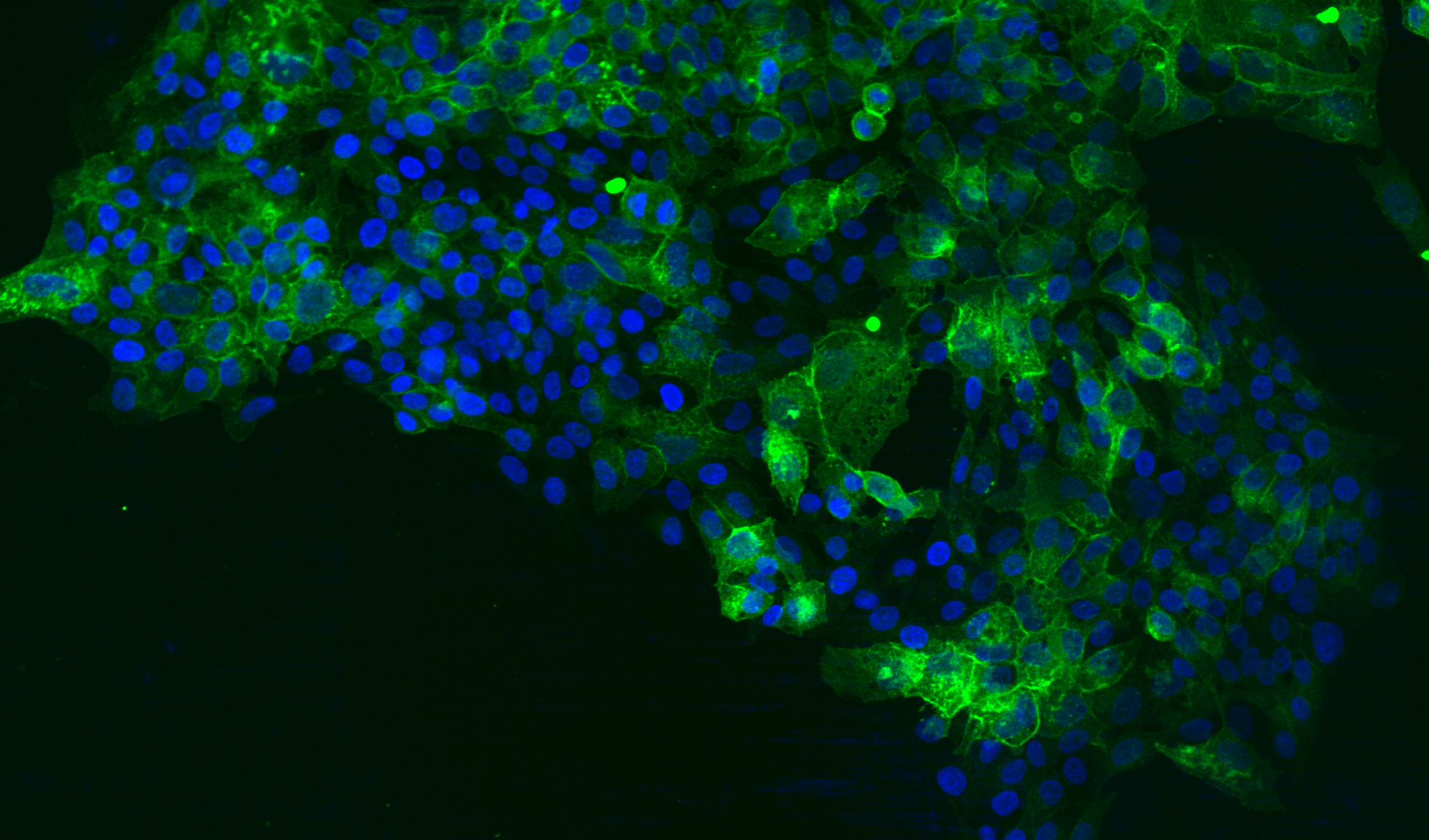Although hepatitis E virus (HEV) is the most common cause for acute viral hepatitis with more than 20 million cases per year and 70 000 deaths annually, very little is known about the life cycle of the virus and especially its entry. Despite being a prime candidate for pharmacological intervention, the entry mechanism of HEV has not yet been identified and druggable host factors to restrict HEV entry have not been identified so far.
A recent study by the team around Jil Alexandra Schrader, Dr. Volker Kinast, and Prof. Eike Steinmann now identified the epidermal growth factor receptor (EGFR) as a novel host factor for HEV and revealed it significance for the HEV entry process. Using both siRNA and shRNA in human hepatoma as well as hepatocyte like cells, EGFR knockdown was found to reduce HEV susceptibility. Taking advantage of FDA-approved drugs, endogenous EGFR was discovered to be critical for HEV infections of enveloped and non-enveloped HEV. While various time of addition infection experiments, as well as numerous virological assays including replicon systems revealed that EGFR inhibition diminishes post-attachment step during HEV entry without impacting HEV RNA replication or progeny virus assembly. Ectopic expression of both wildtype EGFR and mutants that are either constitutively active or kinase-dead demonstrated that the presence of EGFR on the cell surface facilitates HEV entry independent of its signaling. Of note, removal of EGFR’s extracellular ligand binding domain unveiled that the proviral effect is caused by EGFR itself and its ligand binding domain rather than its signaling. Of note, HEV entry was impacted by modulated EGFR in both primary human hepatocytes and HepaRG cells.
Thereby, the study offered novel insights on the HEV life cycle and pinpoints EGFR as a potential target for HEV antiviral strategies in the future.
This study was published in Hepatology in February, 2023. Publication link:

